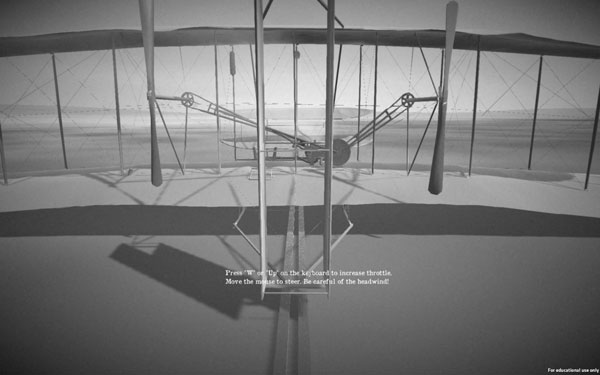It seems like AR and VR have been hot topics for a while, and for good reason. Oldsters like me tend to point to the young whippersnappers who grew up as digital natives and assume that they want a screen in every exhibition. The thing is, with a good interpretive plan and a digital/media team (in-house or an outside partner) AR and VR can become amazing enhancements that—get this—actually helps the visitors understand the content. When AR and VR are used in conjunction with the exhibition’s design and content development, it’s a bit like an author working with an illustrator: the author tells the story, and the illustrator brings it to life in a different, complementary way.
In other words, while it is fun to watch (and play with) all this wonderful technology, it’s important to consider how to best utilize it. Tech for tech’s sake can be lots fun, but tech as a way to enhance a thoughtful experience can have a real impact. AR and VR can also extend the exhibition experience. Visitors inspired by the exhibition can look for additional resources after they leave the museum, and people unable to visit in person can still use online VR to gain an understanding of the subject.

So, what exactly are reality, AR, and VR?
![]()
The terms get thrown around a lot, and if you were watching TV and movies in the 1990s you might remember some particularly misleading (and occasionally outright terrible) fictional versions of these technologies.
![]()
Reality
You probably got this one right (or this has just started a HUGE philosophical debate for you and your friends), but for the sake of this post, reality means the world as it is without anything between you and it.
![]()
AR or Augmented Reality
Augmented Reality puts a new imaginary layer on top of real life. The Skin and Bones app used at the National Museum of Natural History is AR. It puts an overlay of “skin” on the skeletons.
![]()
VR or Virtual Reality
Virtual Reality invents its own world. The aviation interactive pictured and linked to above is VR. Most visitors aren’t going to get to fly a real 1903 plane anytime soon, and this gives visitors a chance to experience some of the thrill and/or terror the Wright brothers might have felt. Some VR technologies are fully immersive and make use of goggles or specially designed spaces to fully place the visitor within the invented experience.
Who’s Using This Technology at the Smithsonian?
There are a number of people in museums who use this technology as an interpretive tool, but don’t actually make the technology themselves. When Yayoi Kusama: Infinity Mirrors was open at the Hirshhorn, the museum had a VR version of the mirror rooms developed for visitors who had mobility issues and were unable to walk into the small mirrored rooms. In this case, the technology was driven by visitor services and a desire to make the art accessible to everyone.
At the Renwick Gallery, the upcoming exhibition Reforestation of the Imagination at the Renwick Gallery will use AR technology as an artistic media. This is an example of an artist integrating an AR experience into their artwork.
One example from Smithsonian Exhibits is the bank robbery interactive in The FBI Experience. It uses AR to allow visitors to search for evidence at a crime scene. We developed the story, which explains how the FBI investigates a bank robbery, and designed the exhibition to match the crime scene. We worked with our media partner to make sure that the AR told the same story. This interactive required coordination between exhibition development, design, and media.
So, in short, incorporating AR and VR isn’t necessarily an easy process, but if a project builds in the time to do it right, it can be a fantastic tool within an exhibition

Want to see the examples for yourself?
If you want to see the original Wright Flyer that inspired the VR experience, visit The Wright Brothers and the Invention of the Aerial Age on the second floor of the National Air and Space Museum.
You can use the Skin and Bones app in the Bone Hall on the second floor the National Museum of Natural History.
Reforestation of the Imagination at the Renwick Gallery will open June 28 and run through January 5, 2020.
Information on touring The FBI Experience is available on their website.
Want to learn more about the projects?
Smithsonian Exhibits designer Maddie Wan organized an Open Talk about VR/AR and her panelists agreed to let us link to their work. Check out our resources page to learn more about projects by:
- Cody Coltharp, Digital Interactive Designer, Smithsonian Center for Learning and Digital Access
- Diana Marques, Visual Science Communicator
- Sara Snyder, Chief of Media and Technology at the Smithsonian American Art Museum
